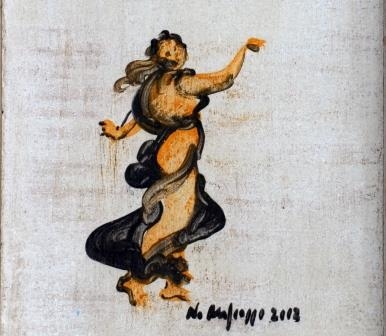This exhibit, therefore, gives an account of a truly notable experience by putting together fifty lava stones (perhaps the most interesting feature of the master’s pictorial output), ten ceramics, twenty Pompeian subjects (another significant feature of Migliozzi’s creativity) and one oil painting. Migliozzi is one of those artists who, between XX and XXI century, have wisely and persistently explored key features of ancient techniques, a research that, for Migliozzi, is deeply rooted in his being a man of the South living with the ruins of a great and ever-present past. Thus, just to mention a single but fundamental example, in his explorations and inquiries through the years Migliozzi has followed recent researches on the question of encaustic, and has come on his own to extremely reliable conclusions, scrupously tested through veritable scientific experiments. Hence he has been able to debunk many myths that even today are a hindrance to the progress of true philological knowledge, and he has also easily rebutted other colleagues’ misleadings. Nonetheless, Migliozzi is too gentlemanlike, too discreet, to turn his research into polemical argument. He is an absolutely peaceful man and his research advances in peace, with full self-awareness but without hostility. The certainties Migliozzi has reached in the field of philological inquiry are for him only a stimulus, actually the strongest and truest stimulus for his own creativity, which is unique and totally autonomous, as this exhibit vividly shows.

